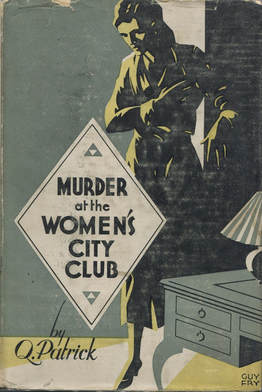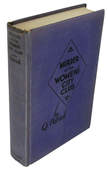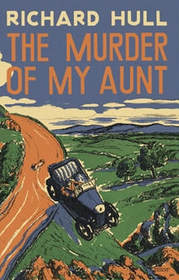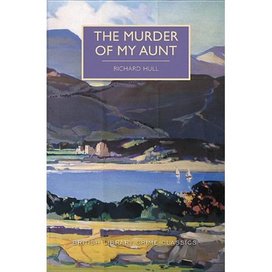 Cover of Murder at the Women's City Club. Image from PRETTY SINISTER BOOKS website.
Cover of Murder at the Women's City Club. Image from PRETTY SINISTER BOOKS website. On his site, Curt has provided author information for these books, which is useful since four different writers contributed to the series at different times. Most famously – if that's the right word – the Patrick/Quentin/Stagge novels were either solo or collaborative projects between Q. Patrick creator Richard "Rickie" Webb and Hugh Callingham Wheeler.
Indeed, the entire story of Club takes place over a weekend at a women-only apartment building, and the cast of characters is quirky and colorful. The club's president, Mabel Mulvaney, returns to the metropolitan town of Desborough, New York and is anxious to talk to Dr. Diana Saffron, an invalided resident and very successful specialist in her medical field. The two meet, but very shortly both women have died, asphyxiated by the gas that runs in each room. The sudden deaths bring the boorish police detective Manfred Boot into the women's club, a man whose masculine authority makes him blind to more nuanced details of the case.
To be fair, Detective Boot has to contend with some trying suspects. Freda Carter, the deceased Dr. Saffron's young protégé, is a doctor-in-training whose clinical observations have the cool air of judgment; friendly Deborah Entwhistle, with her ironic-yet-honest approach to life, also unnerves the no-nonsense Boot; Millicent Trimmer, club secretary, has a penchant for fainting just when she needs to be interviewed; Amy Riddle has her own suspicions, and they revolve around "colored" club staff members Rudy and Cornelia; and then there's Constance Hoplinger, the resident mystery novelist, who takes a little too much pleasure in the current situation and theorizes about how her own detective would handle the case.
As a mostly forgotten and unsung American entry of mystery fiction's Golden Age, I found Murder at the Women's City Club remarkably satisfying, spirited, and enjoyable. The authors – and this might be Patsy Kelley's prose contribution – use humorous third-person omniscient perspective to freely comment on characters and provide observations during introductions and scenes. Mystery readers might be frustrated by this narrative approach, as the details effectively define and develop the characters but might also feel like unneeded description. To me, the opinionated third-person perspective is a delight and is used well; take this example of observational lines that brings Mabel Mulvaney into focus:
Mrs. Mulvaney was not a prepossessing person. Her smile was acetic, her expression ascetic and her figure, while not exactly athletic, was built for speed and activity rather than for beauty. But what she lacked in embonpoint and personal charm, she made up for in efficiency. She was a Managing Woman, born to command rather than to comfort. She belonged to every committee to which she could commit herself and she made an excellent president for the Women's City Club.
Suddenly, a scream rang out. It was Miss Hoplinger. Gasping for breath, she fell back against the wall and pointed with a trembling finger at a thin, red stream that came trickling aimlessly down one of the glass doors in front of them, out of the upper region of the shaft.
"Blood!" she exclaimed, and then again, louder, "I tell you, it's blood."

UPDATE: Curt at The Passing Tramp blog has provided some fantastic history and analysis of this title, as well as great information about the writers behind the Q. Patrick pseudonym. You can read these articles here and here.


 RSS Feed
RSS Feed